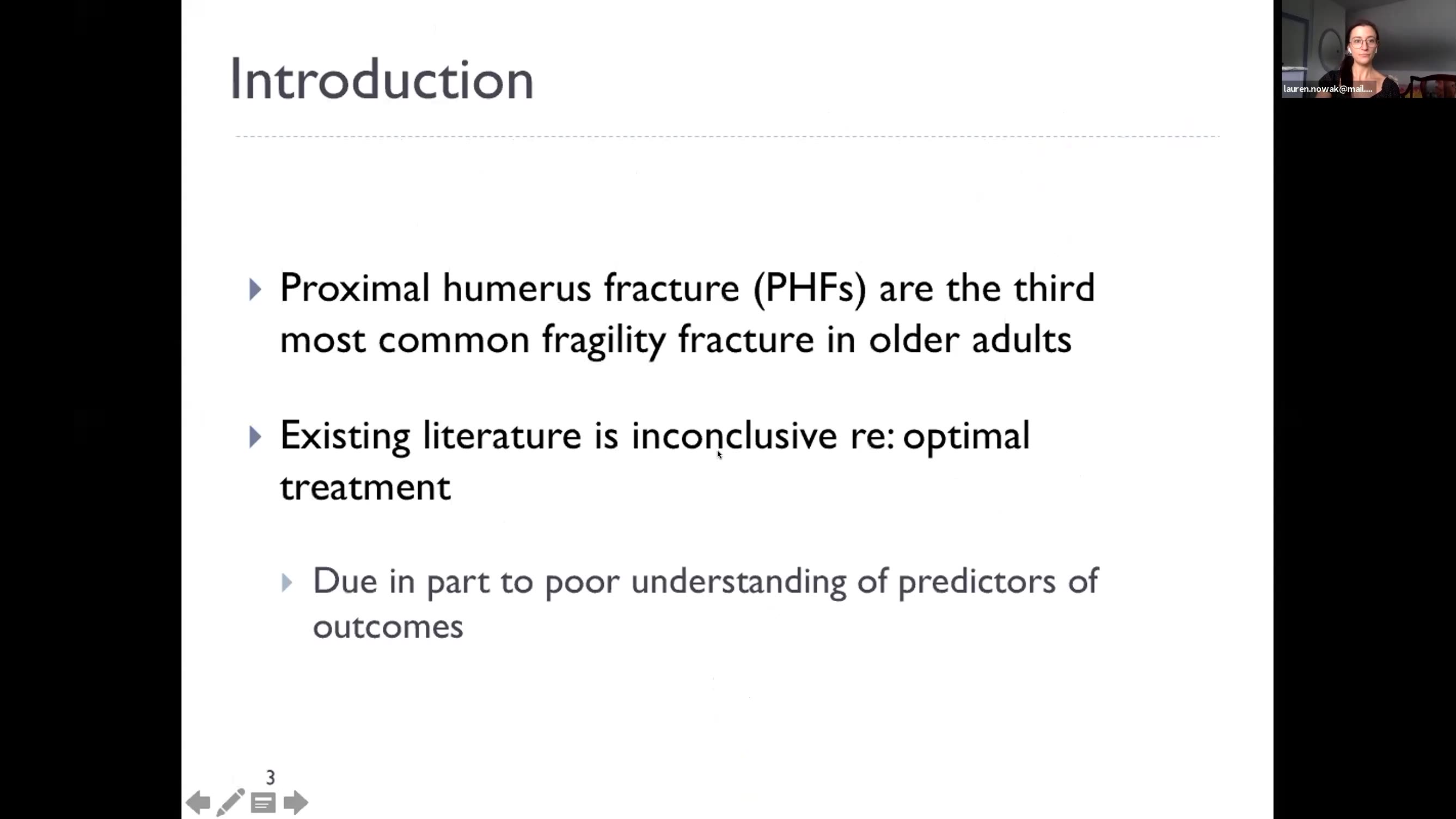Please login to view this media

- Talk
- Canada
The Development and Internal Validation of Novel Risk Prediction Tools to Predict Subsequent Shoulder Surgery Following Initial Treatment of Proximal Humerus Fractures
Description
The presentation by Lauren Nowak discusses proximal humerus fractures, identifying them as the third most common fragility fractures in older adults. Despite their prevalence, the optimal treatment remains inconclusive due to a lack of understanding of outcome predictors. The objectives of the study include identifying risk factors for subsequent surgeries based on treatment type, developing risk prediction tools, and validating these tools internally.
Using administrative data from the Institute for Clinical Evaluative Sciences, patients aged 50 and older with proximal humerus fractures from 2004 to 2015 were analyzed. Various exclusion criteria were implemented to ensure the robustness of the study cohort, resulting in a division into groups based on treatment type—fixation, replacement, and conservative treatment.
The study employed logistic regression models to analyze data subsets and evaluate interactions among variables. Key outcome measures included subsequent surgery rates based on a combination of procedural and diagnosis codes. The results showed significant predictors of subsequent surgeries for each treatment type.
Notably, certain factors like bone quality in surgical treatments played crucial roles, while older age was protective in conservative treatment. A detailed point system assigned risks based on predictive factors, demonstrating substantial variations in subsequent surgery likelihood depending on treatment type.
The findings indicate that the tools developed have strong discriminative ability in fixation and conservative treatment groups but face limitations for replacement interventions. The study contributes vital insights for clinical decision-making and future research directions, aiming to enhance treatment strategies for elder patients with proximal humerus fractures.